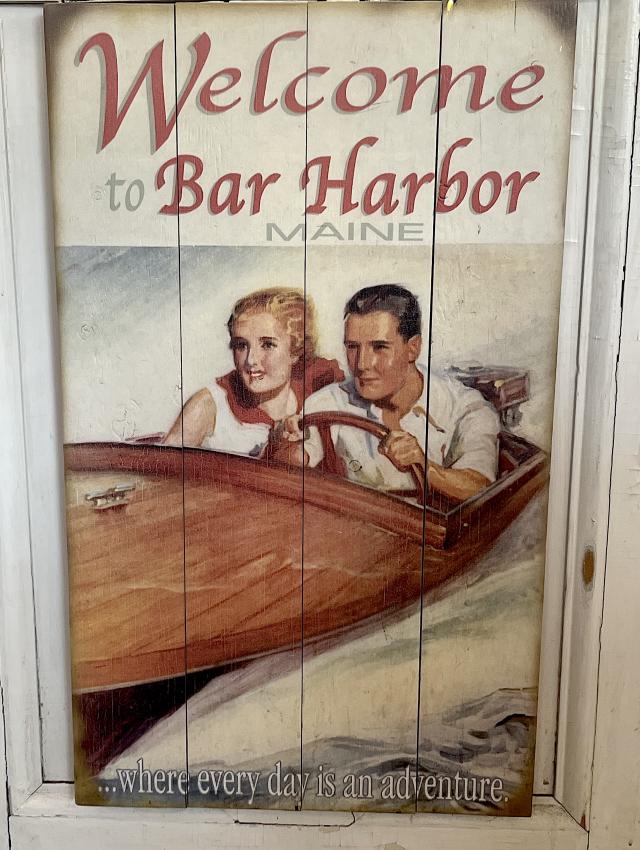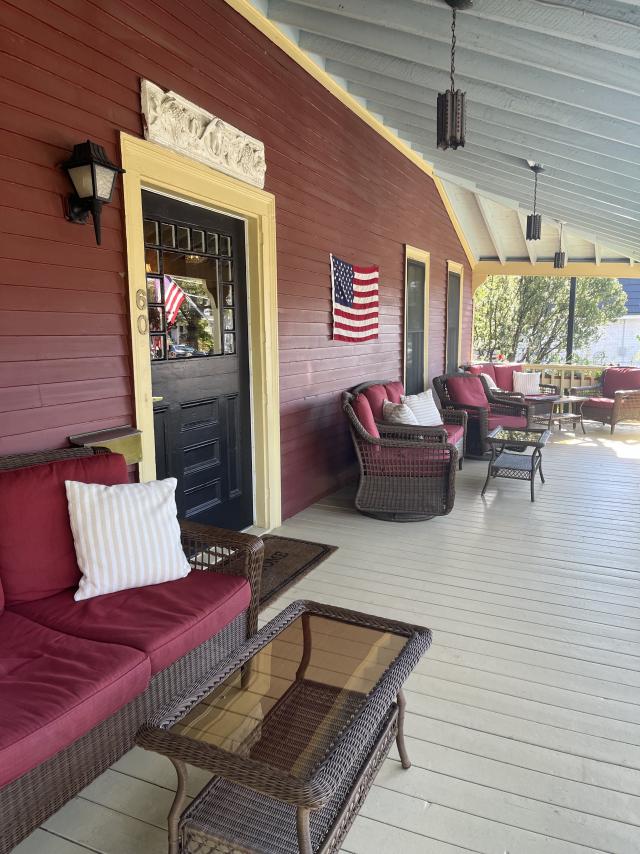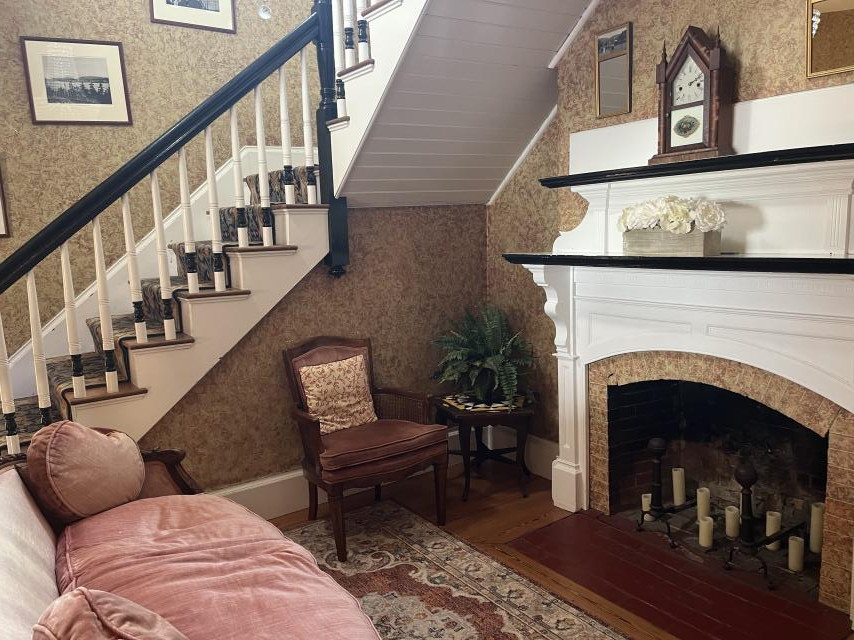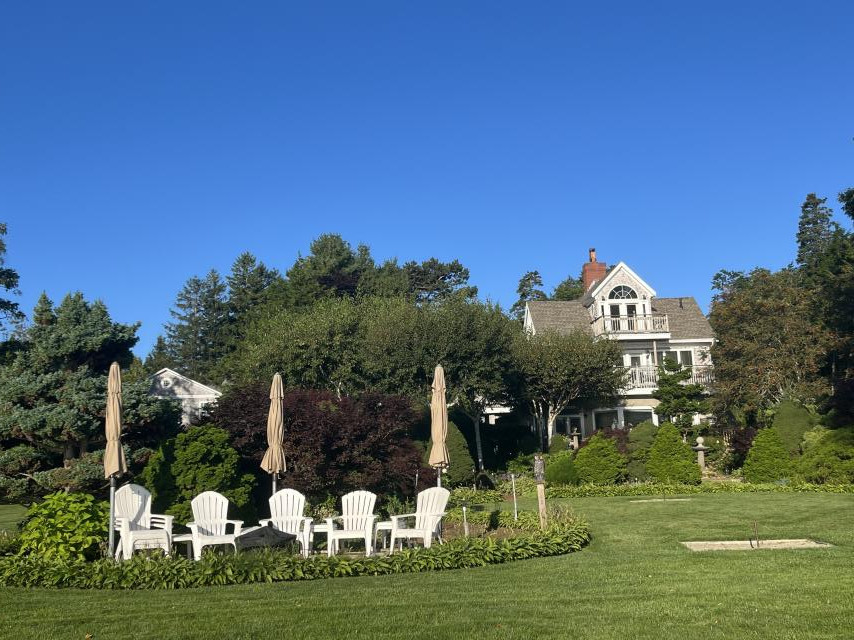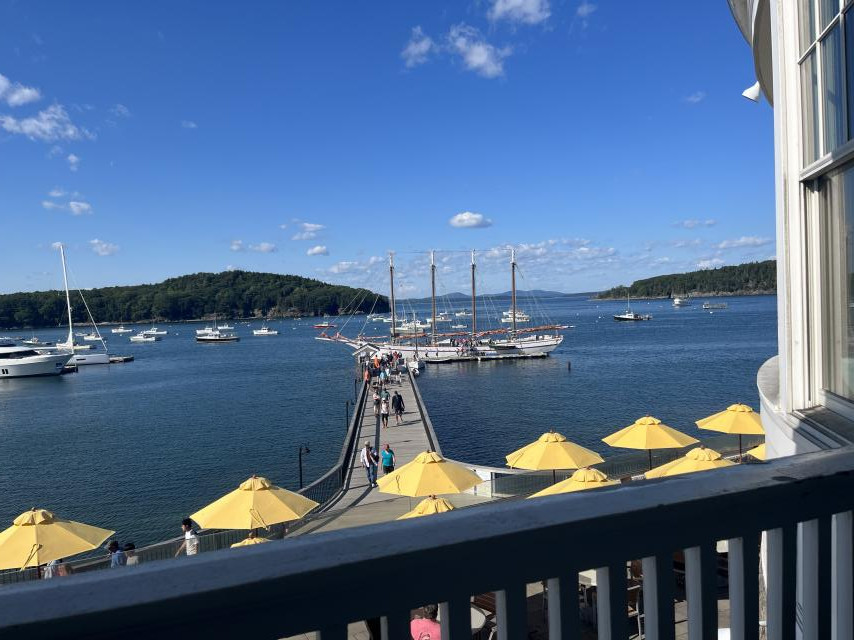I didn’t throw a dart at a map of north-eastern USA but it was pretty close.
Our desired destination was Cape Cod but Boston, 90 minutes from it, required too many frequent flyer points, while Portland, Maine required a mere handful.
From there I figured we’d find a little seaside town surrounded by parklands – more or less Noosa on the Atlantic – and sit in the late summer sun and stuff ourselves silly with lobster, clams and fish chowder. And that’s what brought us to Bar Harbor and the Central House Inn.
Most of the accommodation houses in Bar Harbor look irresistibly cute from the outside, but the Central House ticked all the boxes inside and out.
OK, it didn’t have the sea views of the Bar Harbour Inn or the manicured lawns and clusters of Adirondack garden chairs of Holbrook House, but it reeked of a fascinating history and it was half the price.
Opened in 1887, the Central House is not as central as it once was, on a quiet stretch of Cottage Street, which is a blessing because Main Street, which leads to the harbour, throngs with shoppers by day and diners and drinkers by night. Today’s Central House combines traditional interiors with mod cons but everywhere you look takes you back a century or so, to when it opened for business as Briarfield Cottage, named for the small field of blackberries beside it.
From 1890 to 1902 it was rented every summer by John Roll McLean, publisher of The Washington Post, whose wife, Emily, was a glamorous and outspoken Washington socialite of great renown.
Their only child, Ned, who grew up summering at Bar Harbor, also became a resident and owner of a mansion along the Shore Path, but was chiefly famous for buying his wife Evalyn the Hope Diamond, thereby becoming the last private owner of it.
But it wasn’t just the McLeans who added lustre to this rather remote little port.
During the so-called Gilded Age, Bar Harbor became the exclusive summer resort of the rich and famous, who were initially drawn to the area by the paintings of the Hudson River Artists’ group. By the late 19th century, the town rivalled Newport, Rhode Island in both wealth and prestige, with more than 30 glamorous hotels and 170 grand shoreline estates. Notable residents included prominent families like the Rockefellers, Vanderbilts, Roosevelts, Morgans, DuPonts, Proctors, Livingstons, Fords, Pulitzers, Bouviers and Astors.
Bar Harbor also became a popular destination for cruise ships, with one company based in New York offering booze-fuelled week-long parties on board, with captain and crew joining in the merriment.
Shore Path residents were shocked one late summer morning to see a cruise ship drunkenly run aground on a rocky beach in the harbor.
But that era closed dramatically soon after World War II with the Great Fire of 1947, which destroyed many of the grand summer cottages and even grander hotels.
After a wet start to the summer, in late July 1947 the rain stopped on Mount Desert Island, on which Bar Harbor is situated, and it remained warm and dry into the longest Indian summer on record. From 17 October firefighters were fighting forest blazes across many fronts in Acadia National Park, but on the afternoon, the wind suddenly changed and increased to gale proportions as a dry cold front moved through, sending the inferno directly towards Bar Harbor.
In less than three hours the wildfire travelled 10 kilometres, leaving behind a five-kilometre-wide path of destruction. The fire swept down Millionaires’ Row, an impressive collection of majestic summer cottages on the shore of Frenchman Bay. Sixty-seven of these seasonal estates were destroyed. The fire skirted the business district, but razed 170 permanent homes and five large historic hotels in the area surrounding downtown Bar Harbor.
But there is still plenty of history to see in Bar Harbor, and its surrounds, and wild beauty abounds along the tracks and trails of Acadia Park.
And then there’s the lobster.
It’s what Maine is rightly famous for and we ate our fair share over three days in town, finding the harbour-front Reading Room at the Bar Harbor Inn to offer superb ways of eating lobster in modest portions, such as their bisque and lobster bruschetta.
Yum!
This place also dates back to 1887, when the Oasis Club opened it as the Mount Desert Reading Room, which happened to sell cocktails, wines and snacks for its voracious readers.
A long drive back to Portland to drop off the car, and even longer train-ride to Boston, a night at the very quirky Citizen M Hotel, a limo pickup organized by our generous host, and here we are at Hyannis Port, Cape Cod, just down the road from the Kennedy compound and ready to party!

